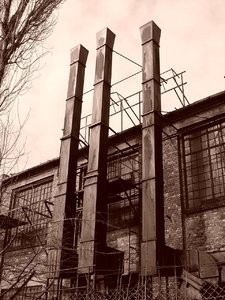According to a recent news article from The Louisiana Record, a man with malignant pleural mesothelioma (MPM) has just filed a lawsuit against a factory that produced asbestos products for many years. He claims in his mesothelioma lawsuit that he was exposed at his residence to the deadly asbestos fibers, which ultimately caused him to develop mesothelioma. He reportedly lived near a factory that used the substance regularly in protduction.
 In his complaint, he said he lived near the plant that used chemicals that contained asbestos during the 1980s. He was diagnosed with malignant pleural mesothelioma in 2015 and has just filed this suit. He further claims that they knew of the dangers of their asbestos-filled chemicals and should have warned those in the area and taken steps to make the air around the factory safe. Having failed to so, he alleges, they are responsible for his fatal disease. His doctors have told him he doesn’t have long left to live. The first thing to understand is that while many people think asbestos was banned in the late 1970s and not used in the 1980s, that is not exactly correct. As our Boston mesothelioma lawsuit attorneys can explain, it is true that asbestos was largely banned in the 1970s through administrative action of the U.S. Environmental Protection Agency (EPA). However, that ban was overturned a few years later by the U.S. Supreme Court on grounds that the ban was unconstitutional. It is not that Congress did not necessarily have the power to ban asbestos, but it would likely have to do so through the standard legislative processes, using the Interstate Commerce Clause (ICC) of the legislative act.
In his complaint, he said he lived near the plant that used chemicals that contained asbestos during the 1980s. He was diagnosed with malignant pleural mesothelioma in 2015 and has just filed this suit. He further claims that they knew of the dangers of their asbestos-filled chemicals and should have warned those in the area and taken steps to make the air around the factory safe. Having failed to so, he alleges, they are responsible for his fatal disease. His doctors have told him he doesn’t have long left to live. The first thing to understand is that while many people think asbestos was banned in the late 1970s and not used in the 1980s, that is not exactly correct. As our Boston mesothelioma lawsuit attorneys can explain, it is true that asbestos was largely banned in the 1970s through administrative action of the U.S. Environmental Protection Agency (EPA). However, that ban was overturned a few years later by the U.S. Supreme Court on grounds that the ban was unconstitutional. It is not that Congress did not necessarily have the power to ban asbestos, but it would likely have to do so through the standard legislative processes, using the Interstate Commerce Clause (ICC) of the legislative act.
Specifically, Congress would probably use what is known as the Dormant Commerce Clause as opposed to the Active Commerce Clause to completely ban the use import, mining, manufacturing, and sale of asbestos and asbestos products. Since it did not do so, the Supreme considered the way in which asbestos was banned to be unconstitutional. This did not open the floodgates to use asbestos one again, but it did make some asbestos use in small quantities and industrial applications allowable. This is likely what allowed an asbestos chemical factory to operate well into the 1980s, if the allegations are true.
Most of these cases come down to what is essentially a failure to warn cause of action. The reason for this is because there is nothing inherently negligent about having employees work around toxic substances. In fact, it happens all the time. When someone hires a contractor to remove asbestos prior to renovations or demolition, a process that is called asbestos abatement, the workers should be well aware of the dangers of asbestos, and they should be trained, certified, and provided with proper protective clothing and respirators or ventilators. However, for many years, companies have had people working with the toxic substances who had no idea that they were being exposed to the deadly asbestos fibers, yet the employers were well aware of the dangers and said nothing. In other words, they failed to warn the employees of a known danger, and that is one of the main claims of liability in mesothelioma lawsuits.
If you or a loved one is diagnosed with mesothelioma in Boston, call for a free and confidential appointment at (617) 777-7777.
Additional Resources:
Man alleges asbestos exposure decades ago caused mesothelioma, November 17, 2016, By Carrie Bradon, Louisiana Record
More Blog Entries:
Rondon v. Hennessy Industries, Inc. – “Inevitable Use” Standard in Asbestos Litigation, July 2, 2016, Boston Mesothelioma Attorney Blog
 Mesothelioma Lawyers Blog
Mesothelioma Lawyers Blog

